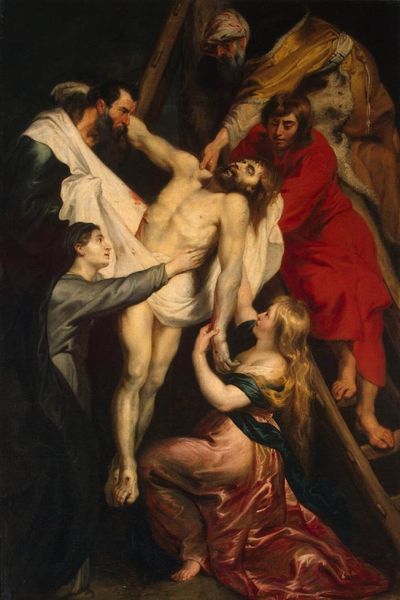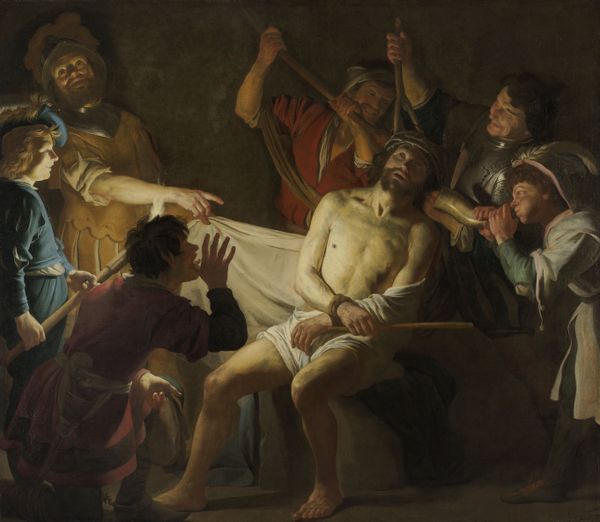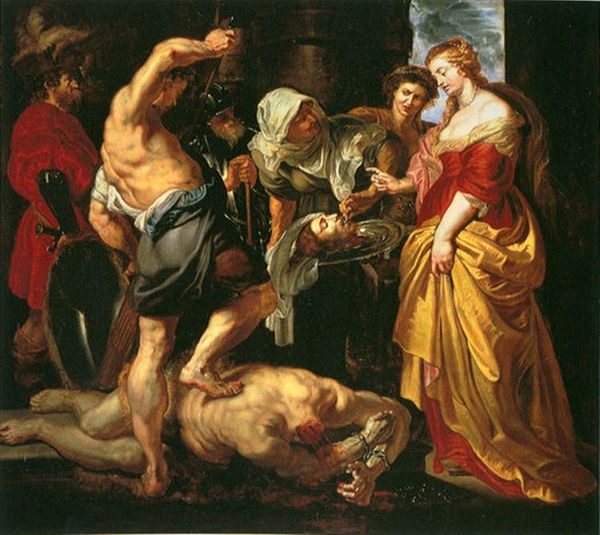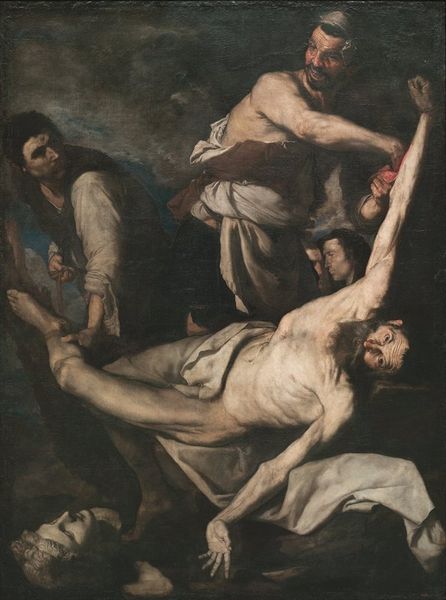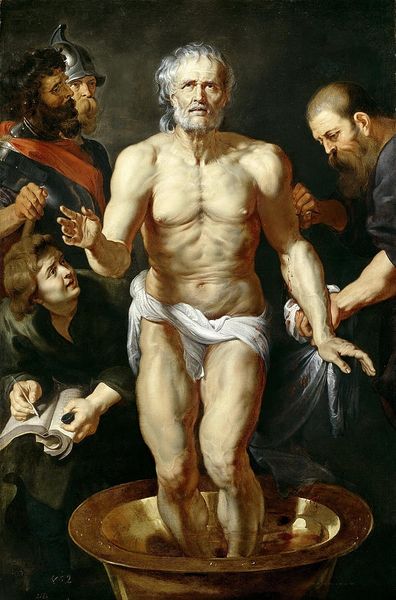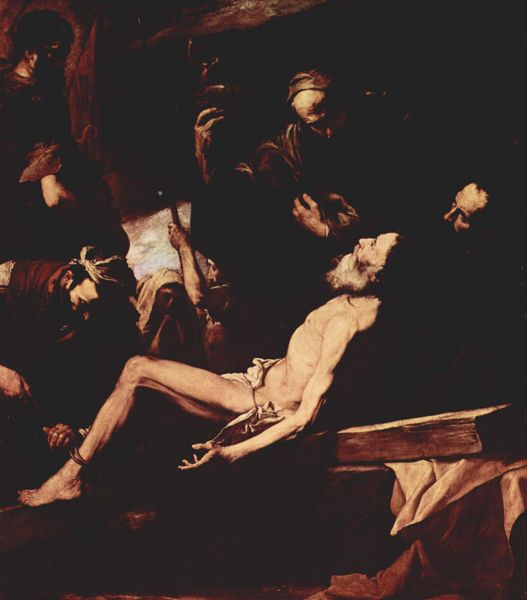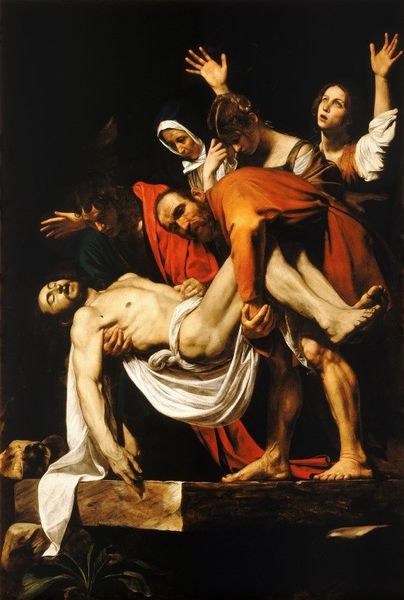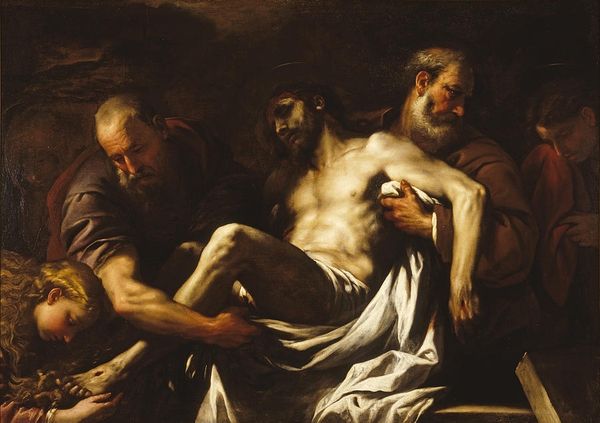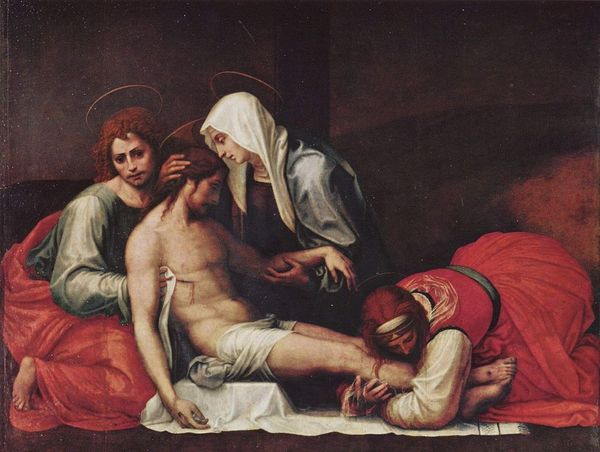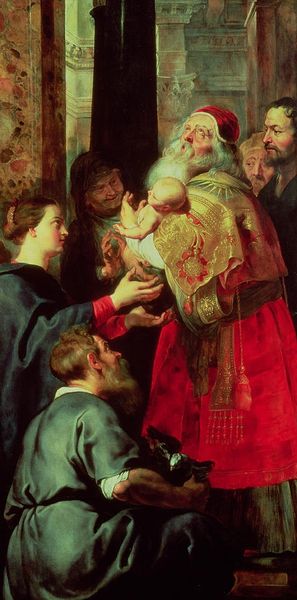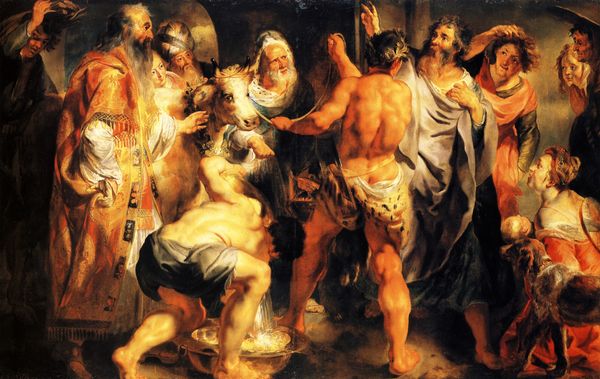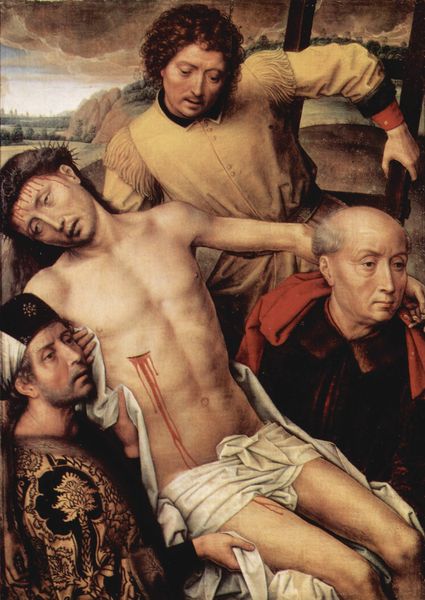
painting, oil-paint
#
baroque
#
painting
#
oil-paint
#
figuration
#
oil painting
#
history-painting
#
portrait art
Dimensions: 422 x 226 cm
Copyright: Public domain
Curator: Here we have Peter Paul Rubens’ “The Last Communion of St. Francis,” an oil on canvas completed around 1619. It depicts St. Francis of Assisi receiving his final communion. Editor: What strikes me first is the raw emotion. It’s palpable. You feel the weight of the moment through the clustered figures surrounding St. Francis, a potent mix of sorrow and reverence. The scene is composed as a single episode from life in its most delicate moments. Curator: Rubens, a master of the Baroque, certainly understood drama. Consider how the Church harnessed the power of such imagery during the Counter-Reformation. Visuals like this reinforced religious narratives and aimed to inspire piety, right? Rubens’ workshop received extensive commissions for different altar pieces, which underscores his important public role. Editor: Precisely. It's more than just piety, though. The gaunt and naked frame of St. Francis is front and center here—there's also a real focus on the physical body. He embodies self-sacrifice and poverty—the radical social implications of Christ’s teachings made visible to the aristocracy for consumption and perhaps to serve as a warning to the poor about piety for survival. It definitely serves a more complex narrative than solely celebrating God. Curator: Indeed, Rubens uses tenebrism to heighten the scene’s intensity, drawing us to St. Francis's weakened body. It reflects both the spiritual significance and the harsh reality of human suffering that underscored much of Baroque thought. Editor: And think about the role of brotherhood evident in this scene. All around the main characters in the center are monastic brothers, seemingly helping the frail Saint, and even displaying his scars and his vulnerability—it creates this visual narrative that amplifies how a person could become the living image of their God. It reminds us about both individual and group-oriented struggles, and the important social functions of the monastery in everyday society at the time. Curator: I find it compelling how Rubens uses the painting as both devotional display and a kind of political tool. I imagine audiences two centuries ago were equally moved. Editor: It definitely creates the idea that an earthly community such as that is worthy of aspiration and celebration, even within such a vulnerable environment where disease can overtake everybody—perhaps one reason why it feels so timely today. Curator: Thanks for highlighting the many narrative layers present here—I appreciate the complexity. Editor: And thank you for the details on its historical context—it’s helped clarify how to see and feel more when encountering "The Last Communion of St. Francis.”
Comments
No comments
Be the first to comment and join the conversation on the ultimate creative platform.
